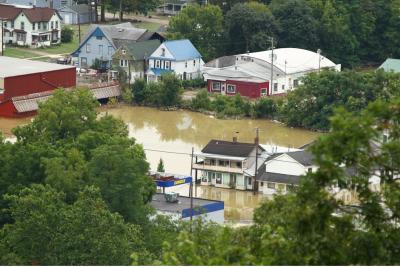Neglecting Model Parametric Uncertainty Can Drastically Underestimate Flood Risks
Current approaches to estimating flood hazards often sample only a relatively small subset of the known unknowns, such as uncertainties surrounding model structures and parameters. Neglecting key uncertainties can underestimate the tails of flood hazard probability distributions, which can result in poor decisions and outcomes. We use a Bayesian data-model fusion framework to calibrate a distributed hydrologic model and to demonstrate some practical implications of neglecting key uncertainties in flood hazard and risk estimates.
We compare the results of the Bayesian approach to two simpler methods: stepwise line search and precalibration. Precalibration improves flood hazard estimates over the best-fit estimates, but provides a wider predictive interval than the Bayesian approach. The predictive skill of the Bayesian approach dominates the stepwise line search and precalibration approaches. Neglecting model parametric uncertainty can drastically underestimate flood hazard and risk. State-of-the-art data-model fusion approaches can help to refine flood risk projections.
Floods drive dynamic and deeply uncertain risks for people and infrastructure. Uncertainty characterization is a crucial step in improving the predictive understanding of multi-sector dynamics and the design of risk-management strategies. Current approaches to estimating flood hazards often sample only a relatively small subset of the known unknowns, for example, the uncertainties surrounding model parameters. This approach neglects the impacts of key uncertainties on hazards and system dynamics. Here we mainstream a recently developed method for Bayesian inference to calibrate a computationally expensive distributed hydrologic model. We compare three different calibration approaches: (1) stepwise line search, (2) precalibration or screening, and (3) the Fast Model Calibrations (FaMoS) approach. FaMoS deploys a particle-based approach that takes advantage of the massive parallelization afforded by modern high-performance computing systems. We quantify how neglecting parametric uncertainty and data discrepancy can drastically underestimate extreme flood events and risks. Precalibration improves prediction skill scores over a stepwise line search. The Bayesian calibration improves the uncertainty characterization of model parameters and flood risk projections.

